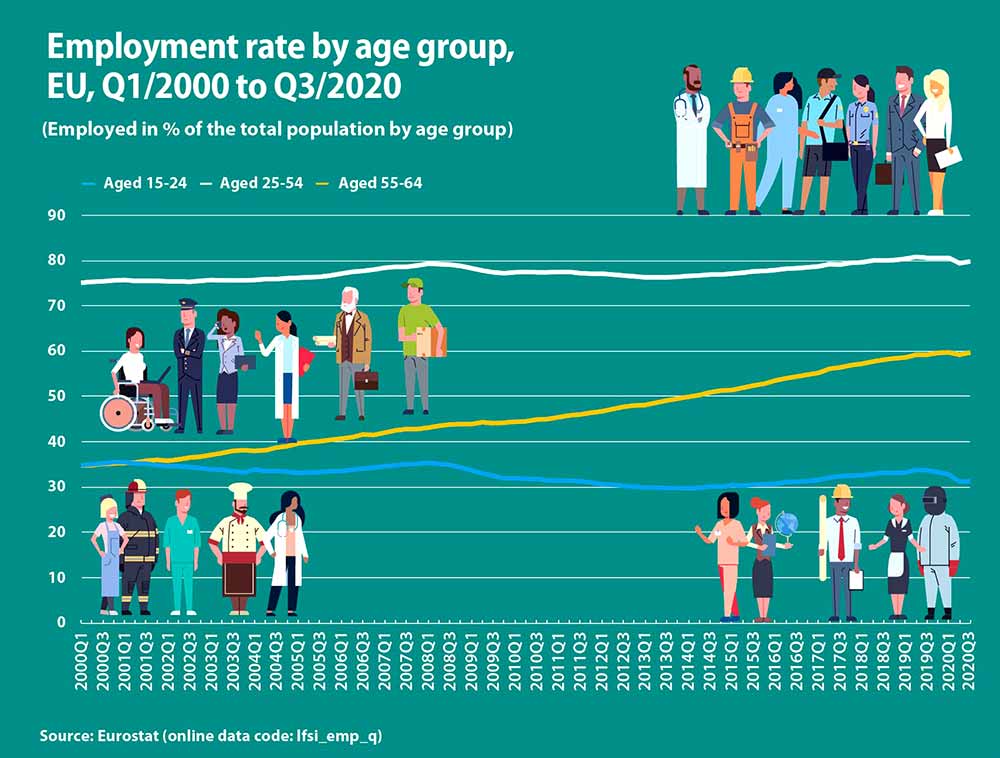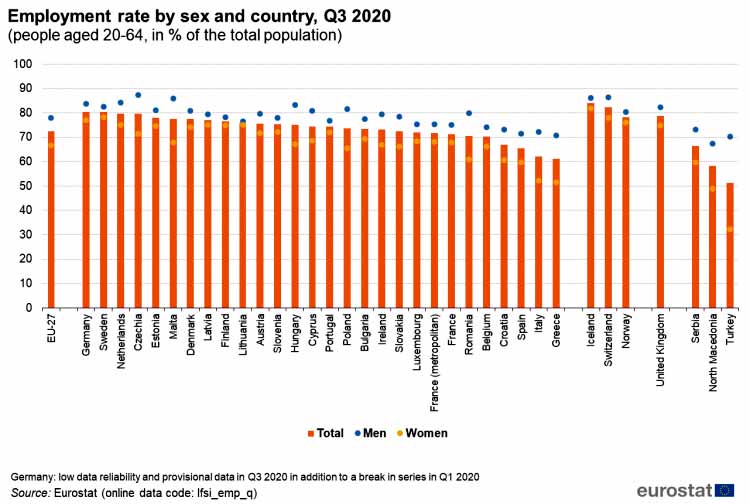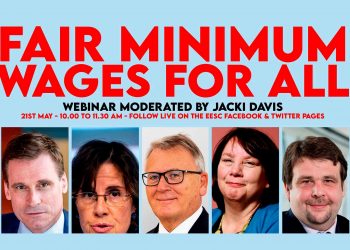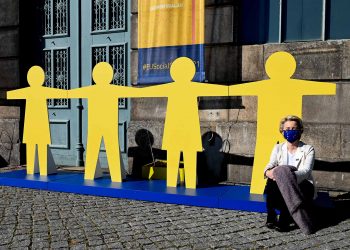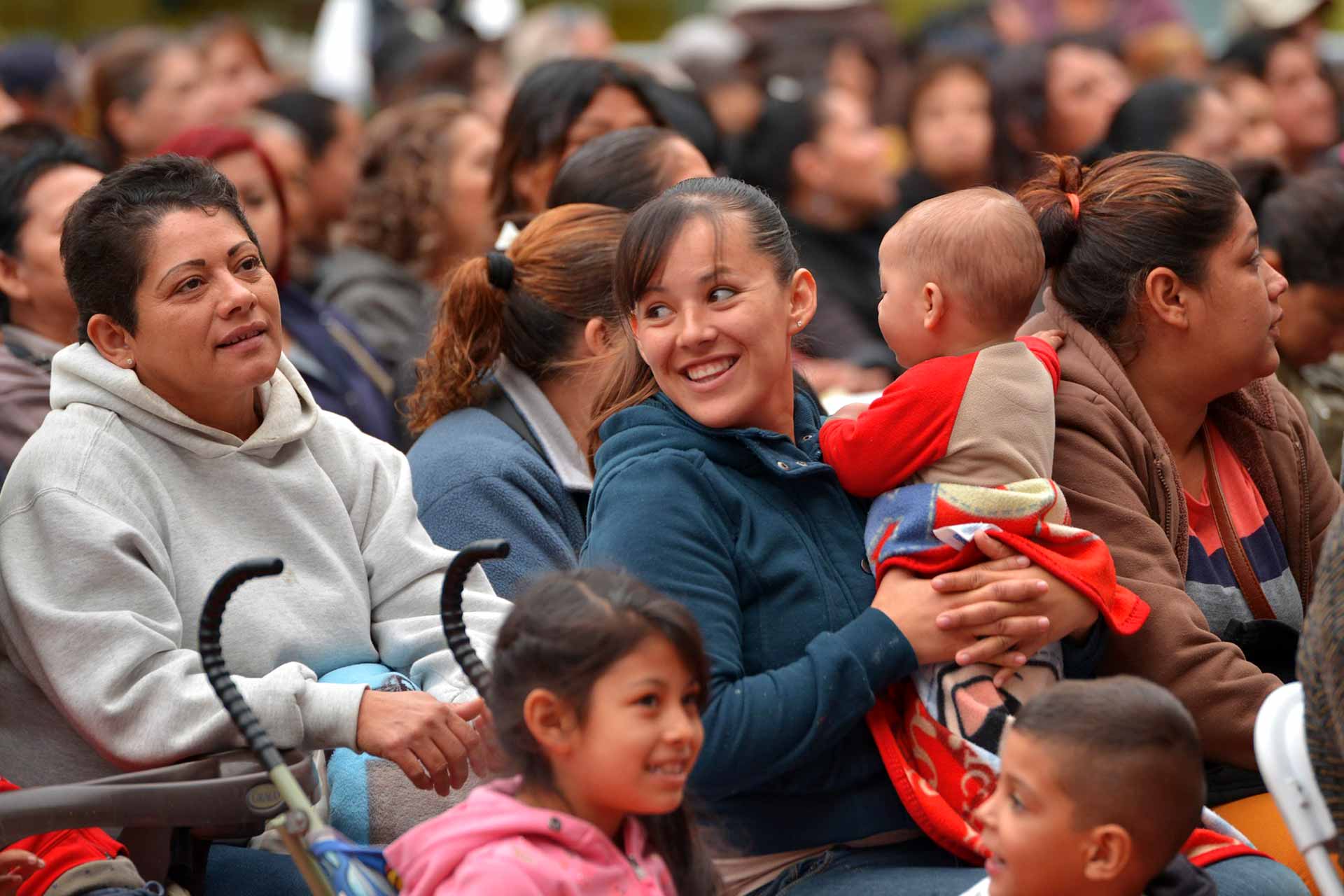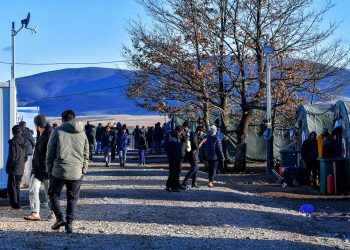The recent health crisis due to the COVID-19 pandemic has impacted employment in the European Union and Eurostat reports 2020 employment flows with empty offices. In order to keep the negative consequences of the COVID-19 crisis on employment and businesses at bay, measures like short-time work or financial support to enterprises have been implemented in many EU Member States. In the first weeks of the crisis due to the COVID-19 pandemic, this kept employed people relatively secure in their jobs thus, avoiding mass layoffs. However, this first stage was already marked by reduced inflows into employment.
Avoiding mass layoffs in 2020 employment flows
Enterprises might have slowed down, revised or cancelled their hiring process or might have decided to not renewing fixed-term contracts or probationary periods for example. These specific effects affecting directly young people were clearly visible during the second quarter of 2020 as further explained in this article. On the other hand, the third quarter of 2020 is characterised by the reduction of the containment measures in many countries and the subsequent upturn of activity, although to a different extent according to the countries and the sectors of activity. Young people also seems to benefit less from the recovery than the rest of the population.
Health crisis hit Europe
The COVID-19 health crisis hit Europe in January and February 2020, with the first cases confirmed in Spain, France and Italy. COVID-19 infections have now been diagnosed in all European Union (EU) Member States. To fight the pandemic, EU Member States have taken a wide variety of measures. From the second week of March, most countries closed retail shops apart from supermarkets, pharmacies and banks. Bars, restaurants and hotels have also been closed. In Italy and Spain, non-essential production was stopped and several countries imposed regional or even national lock-down measures which further stifled the economic activities in many areas. In addition, schools were closed, public events were cancelled and private gatherings (with numbers of persons varying from 2 to 50) were banned in most Member States.
The large majority of the prevention measures were taken during mid-March 2020 and most of the prevention measures and restrictions were kept for the whole of April and May 2020. The second quarter of 2020 is consequently the quarter in which the labour market across the EU has been strongly affected by COVID-19 measures taken by the Member States.
This Eurostat report focuses on the changes in employment observed during the crisis due to the COVID-19 pandemic based on the quarterly data from the European Union Labour Force Survey (EU-LFS). It shows the recent and long term developments as regards employment, mostly on a global European level, but also specifically according to gender, age and level of educational attainment. A specific analysis dedicated to the evolution of temporary contracts and part-time work, including underemployed part-time workers.
Modest upturn in employment in the third quarter of 2020
After the strongest decline ever recorded since 2000 (-1.0 p.p. from Q1 to Q2 2020), the employment rate rose by 0.3 p.p. (from Q2 to Q3 2020) reaching 72.4 % in Q3 2020. Since 2013, the share of employed people in the total EU population kept on growing from one quarter to the next until the third quarter of 2019 (using seasonally adjusted data). However, from the first quarter of 2020 (Q1 2020) to the second quarter of 2020 (Q2 2020), the share of people in employment went down from 73.1 % to 72.1 % (-1.0 p.p.), recording the sharpest cut since 2000. From the second to the third quarter of 2020, the employment rate rose by 0.3 p.p., far from compensating the decrease recorded in the previous quarter.
Employment of men and women decreased to a different extent between Q4 2019 and Q3 2020 employment. In the last quarter of 2019, 78.9 % of the male population and 67.3 % of the female population aged between 20-64 were employed, this share went down to 78.1 % in the third quarter of 2020 for men (-0.8 p.p.) and to 66.6 % for women (-0.7 p.p.).
Employment and unemployment as defined by the ILO concept are, in this particular situation, not sufficient to describe the developments taking place in the labour market. In this first phase of the crisis, active measures to contain employment losses led to absences from work rather than dismissals, and individuals could not search for work or were not available due to the containment measures, thus not counting as unemployed.
The quarterly data on employment will allow along the quarters to report on the impact of the crisis due to the COVID-19 pandemic on employment. This specific article focuses on the age and the level of education attainment of employed people in order to determine potential categories more or less affected by the economic downturn.


